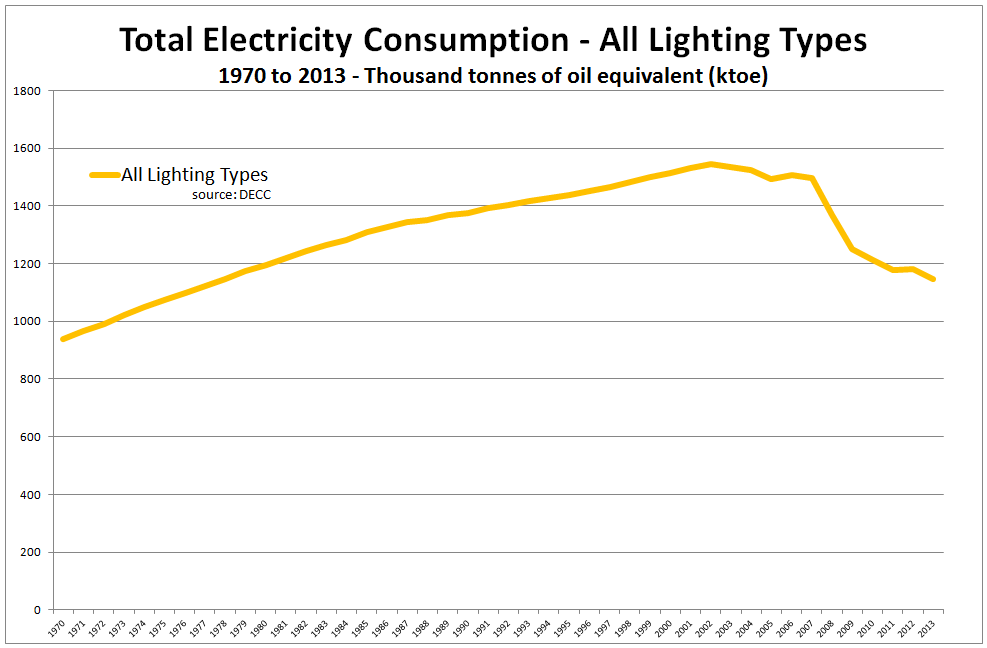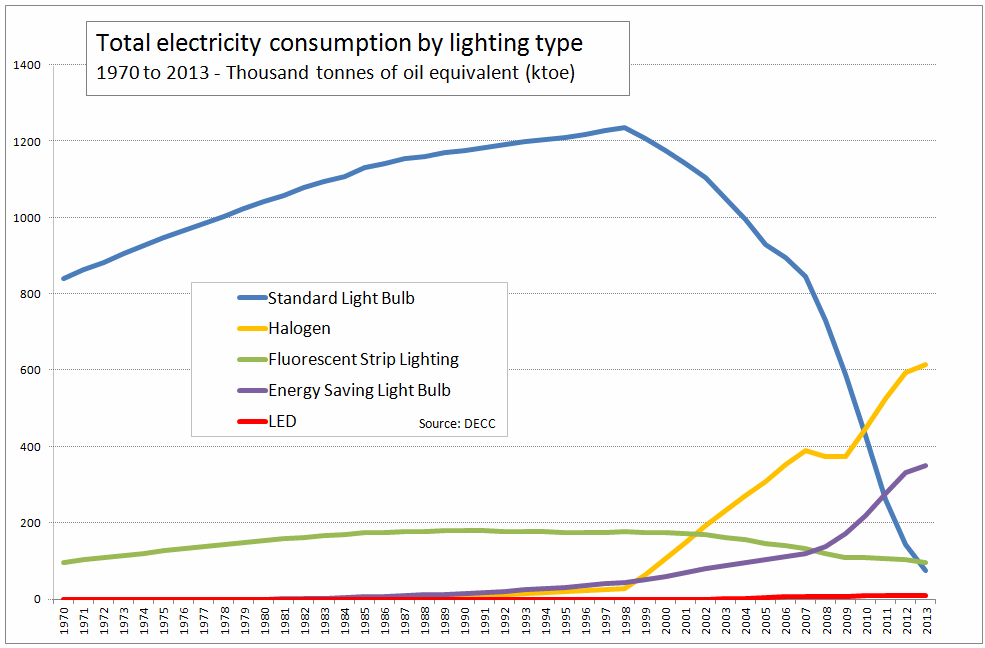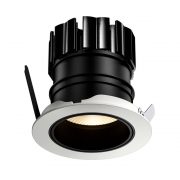What role does lighting play in domestic energy consumption?
The Department of Energy and Climate Change publishes regular statistics on energy consumption. The latest stats, published at the end of September include the latest information on domestic lighting and energy consumption.

The headline news is that the total energy consumed by lighting in UK households continues to drop. Within that headline figure are some surprises.
That the contribution of the standard light bulb continues to drop should be no surprise. The standard lamp bulb is a pariah, a very visible totem of inefficiency and easily swapped out for a more energy-efficient alternative. Halogen continues to dominate and also continues to grow. In 2013, over 50% of the total energy consumed by lighting in UK households was driven by halogen lighting. The UK public still loves halogen for its light quality even if it’s less enamored with the frequent lamp changes and the cost of running it.

Energy saving light bulbs are widely disliked for the poor quality of light they emit yet their use continues to grow. That rate of growth has slowed over the last couple of years however. Fluorescent tube lighting continues a slow decline though the rate of decline has slowed further. At 8% of lighting energy consumed by UK households, it still has a role to play in domestic lighting.
That leaves LED. There are two striking facts about the role of LED in lighting and energy consumption. LED lighting’s contribution is very small (it was less than 1% of the total in 2013) and it’s static, the last three years have seen almost identical consumption figures. As a business designing almost exclusively in LED we look at these figures in surprise. Yet is it that surprising?
LED is a new technology that’s only recently become a viable mainstream domestic lighting source, so it’s not got the reach of longer, more established technologies. That will be a massive factor in its (lack of) take up. It doesn’t explain why take-up looks to have stalled. High quality LED is a fantastic domestic light source. It’s energy-efficient, can last an extraordinarily long time and provides a wonderful quality of light. Maybe the problem is that not all LED is created equal. A lot of people quizzed on their experience of LED lighting wouldn’t recognise our description at all. The bottom end of the market is plagued with poor quality product. Low quality LED doesn’t demonstrate the same light characteristics. It doesn’t offer great colour, indeed it often doesn’t even offer consistent colour. It frequently doesn’t last anywhere near the claimed lifespan and for all that, even a cheap LED is a more than a halogen lamp.
So there is a huge opportunity still for LED lighting in the home but there is a long way to go. I’ll end this piece with a quick anecdote. We met a couple at Grand Designs Live who were looking for LED lighting that would work with a particular finish in their home, a red brick. They’d tested various products and not been happy with the results saying the light had been dingy or too blue. We set up some demonstration fittings in our studios so they could check out what was possible from a good quality LED and they brought in samples of the brickwork they wanted to light. The result? They were able to pick a level of output that would do the job and a 3000K colour temperature that would enhance, not fight with, the finish they were looking to light. It is possible to deliver beautiful lighting with LED but it requires more work than in the days of halogen. It’s something we’re passionate about and something we’ll continue to promote.

